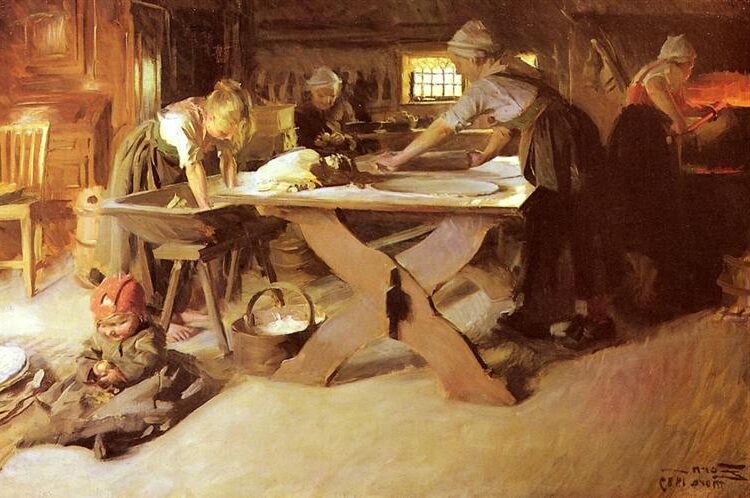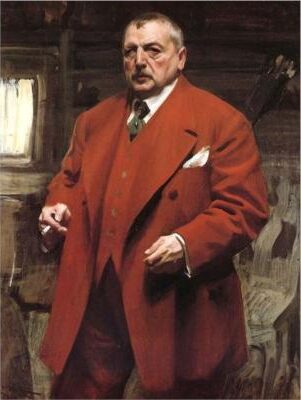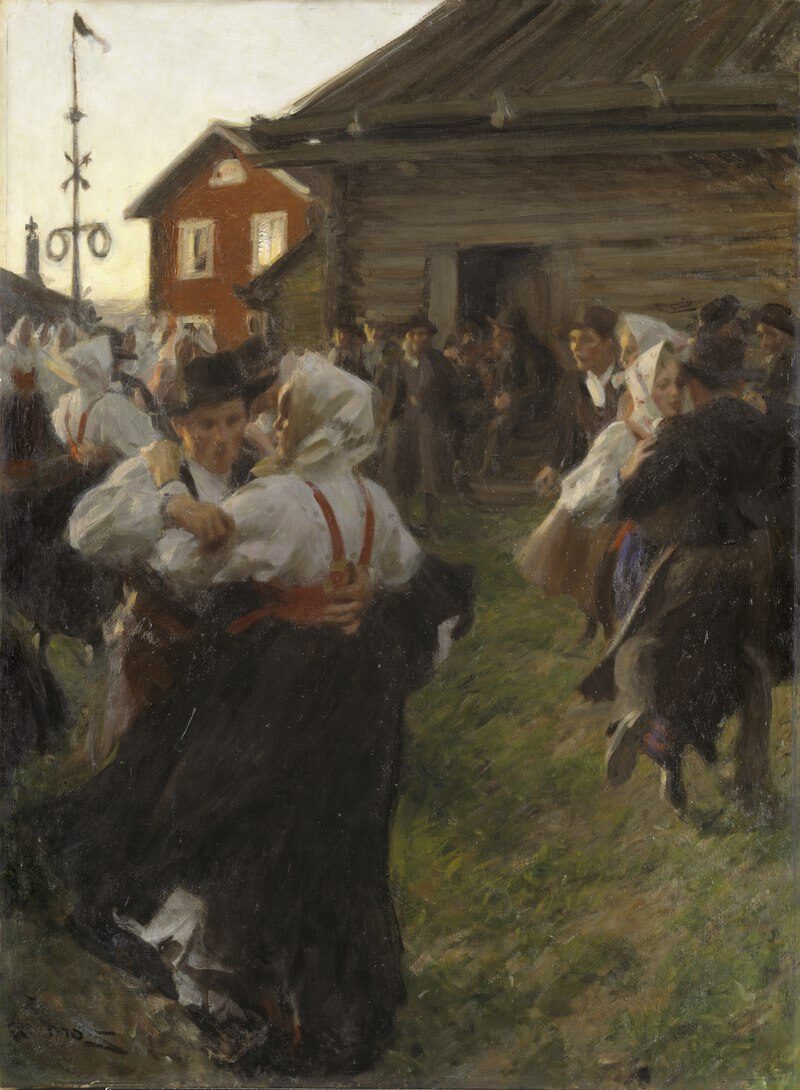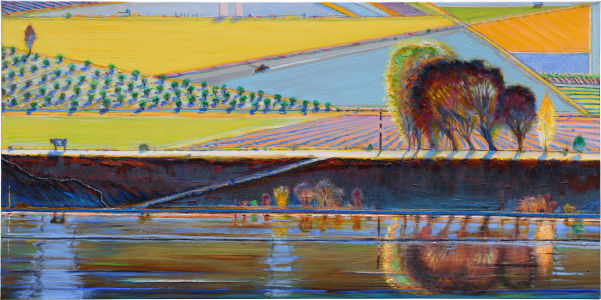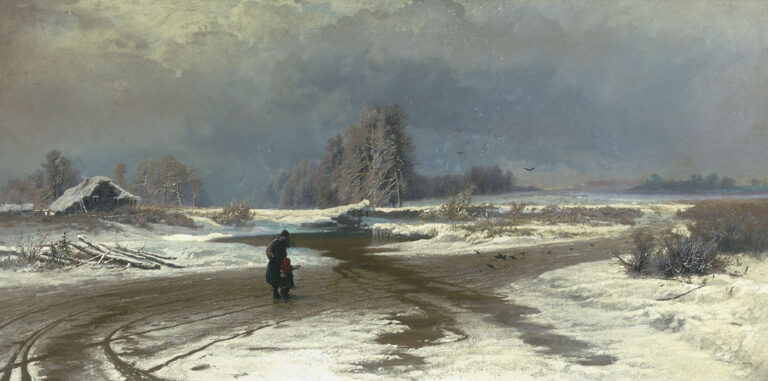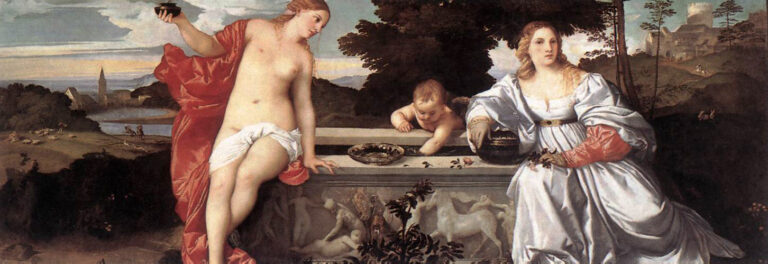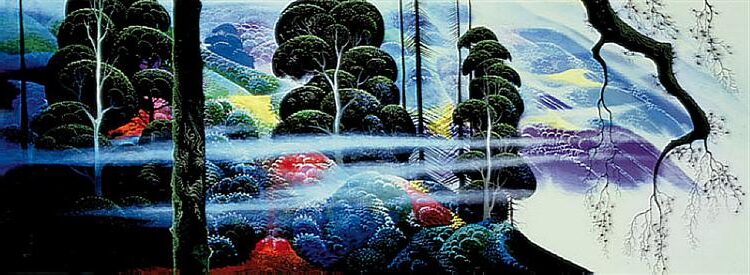Anders Zorn Paintings: Masterpieces of Swedish Impressionism
Born: February 18, 1860; Mora, Sweden
Death: August 22, 1920; Stockholm, Sweden
Art Movement: Realism, Impressionism
Nationality: Swedish
Influenced By: Hans Andersen Brendekilde, Vincent Giarrano
Institution: Royal Swedish Academy of Arts
Anders Zorn Paintings: Masterpieces of Swedish Impressionism
Anders Zorn: A Multifaceted Talent
Anders Zorn, a celebrated Swedish artist, was renowned for his mastery in painting, sculpture, etching, and watercolor. His works demonstrated his diverse skills and immense contribution to art.
Early Life and Education of Anders Leonard Zorn
Born in 1860 in Dalarna, Sweden, Anders Zorn was raised by his maternal grandparents on their farm. This rural environment profoundly influenced his early artistic inspiration.
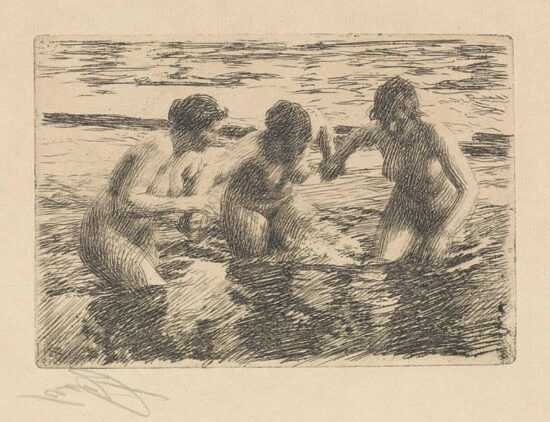
Against The Current (1919) by Anders Zorn
From a young age, Zorn showed remarkable talent in art, which led him to the Royal Swedish Academy of Arts in Stockholm. There, he refined his skills and absorbed various artistic techniques.
The academy provided him with a formal education that acted as the foundation for his future endeavors. By his early twenties, Zorn had already established himself as a promising young artist, gaining recognition for his unique style and approach.
Development as a Painter and Sculptor
Zorn’s development as a painter displayed his ability to capture the human figure and light with unmatched precision. His brushwork and use of light allowed him to create vivid and lifelike portraits.
One of his most famous works, “Sommarnöje,” exemplified his skill in figurative painting. Zorn’s talent also extended to sculpture, where he used his deep understanding of form and detail to create striking pieces.
His sculptures reflected the same sensitivity and attention to detail found in his paintings. This dual focus on painting and sculpture highlighted Zorn’s ability to cross traditional artistic boundaries, reaffirming his reputation as a versatile artist.
Multidisciplinary Approach: Etchings and Watercolors
Besides painting and sculpting, Zorn excelled in etching, producing over 200 etchings during his career. His etchings are known for their detailed and intricate linework.

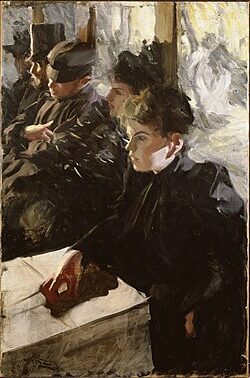
This medium allowed him to experiment with contrast and texture, further cementing his reputation. Zorn’s achievements in watercolor were equally notable.
His watercolors, characterized by their fluidity and vibrant hues, captured the essence of Swedish landscapes and everyday scenes. This multidisciplinary approach demonstrated his capacity to adapt and innovate across various art forms, securing his place as a multifaceted talent in the art world.
Landmark Works and Portraiture
Anders Zorn was a Swedish painter known for his exceptional skill in portraiture and genre scenes. His works like “In Mourning” and “Castles in the Air” are highly regarded. Zorn also painted prominent personalities such as U.S. presidents and Swedish royalty. His pieces like “Midsummer Dance” and “The Painter Bruno Liljefors” showcase his ability to capture both everyday life and artistic figures.
Defining Pieces: In Mourning and Castles in the Air
In Mourning and Castles in the Air are remarkable works by Anders Zorn. Created during the late 19th century, these pieces highlight his adept use of light and shadow.
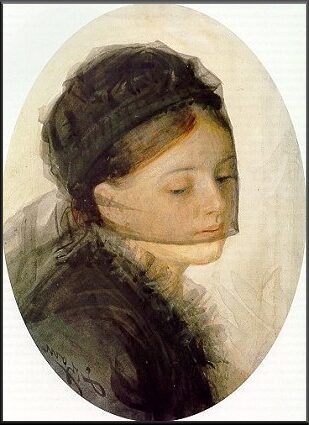

In Mourning captures a moment of deep emotion, with a focus on delicate details and human expression. The painting is a testament to Zorn’s ability to convey mood and atmosphere using restrained colors and brushwork. This work has become iconic in portraying grief with dignity.
Castles in the Air demonstrates Zorn’s talent in using light to create dreamlike imagery. The serene subject and ethereal quality of the piece exemplify his skill in blending reality with imagination, making it memorable for its unique perspective.
Celebrated Portraits of Eminent Personalities
Anders Zorn gained international acclaim for his portraits of notable figures. He painted U.S. Presidents Grover Cleveland, William H. Taft, and Theodore Roosevelt, each capturing the dignified presence of these leaders.
Zorn’s portraits are celebrated for their realism and insightful representation. He also painted King Oscar II of Sweden, merging royal grandeur with personal character.
Zorn’s ability to depict powerful individuals in a relatable manner made him a sought-after portrait artist in his time. These portraits not only showcase his technical skills but also his understanding of the subjects’ personalities, making them highly valued in both historical and artistic contexts.
Midsummer Dance and The Painter Bruno Liljefors
Midsummer Dance is a vibrant depiction of Swedish folk culture. Created in 1897, it captures the joy and movement of a traditional celebration. Zorn’s use of dynamic compositions and rich colors brings the scene to life with a sense of festivity.

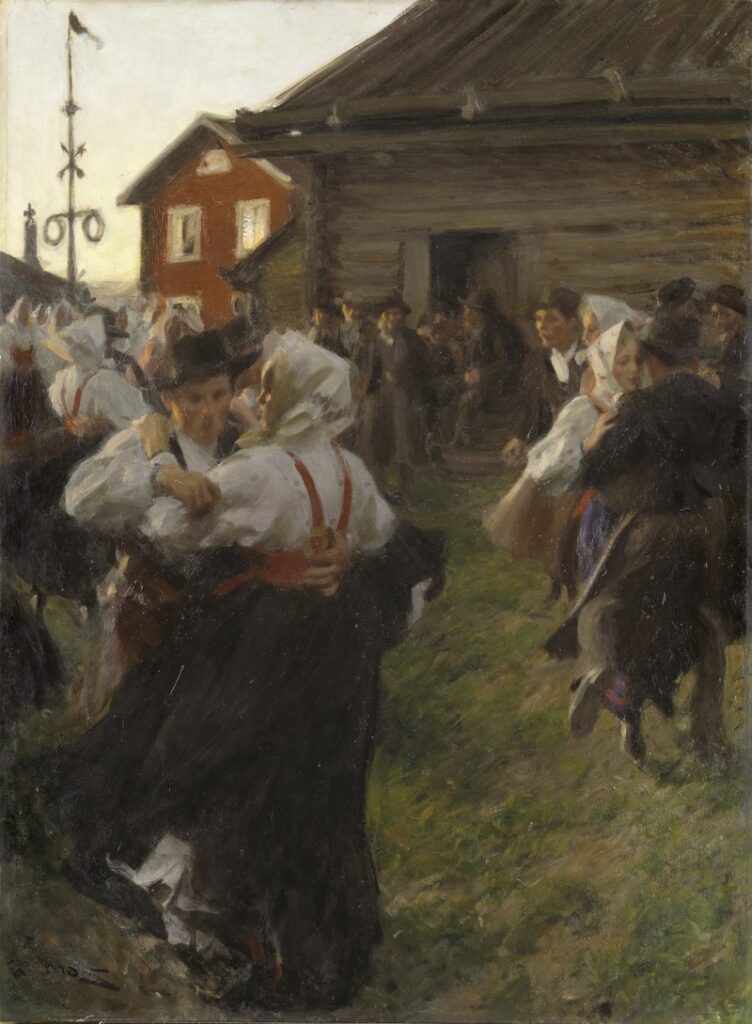
The Painter Bruno Liljefors reflects Zorn’s connection with fellow artists. This portrait conveys the creative spirit and character of Liljefors, a renowned painter of wildlife scenes. Through this work, Zorn not only documents another artist but also highlights the camaraderie within the art community.
Acclaim and Contribution to Art
Anders Zorn, a prominent Swedish artist, gained international acclaim for his exceptional skill in painting and etching. His notable achievements include prestigious awards and influential exhibitions, and his legacy endures in various museums.
Recognition and Prizes on the International Stage
Zorn achieved considerable international success, highlighted by prestigious awards. He was made a Chevalier de la Légion d’Honneur at the Exposition Universelle 1889 in Paris, recognizing his exceptional talent. This accolade brought him global recognition.

Study of Landscape in Richmond by Anders Zorn
Additionally, he and his wife established the Bellman Prize, further solidifying his influence in the art world. Zorn’s work, often celebrated for its technique and innovation, continues to be acknowledged globally, showcasing his significance as a leading artist of his time.
Influential Exhibitions: Paris World Fair and Beyond
Zorn’s participation in notable exhibitions greatly contributed to his fame. His work was prominently featured at the Paris World Fair, where it stood out for its elegance and masterful execution.
These exhibitions not only brought his art to a wider audience but also highlighted his contributions to the art community. Associations with influential artists like Max Liebermann and other events cemented his reputation. Zorn’s pieces, characterized by dynamic composition and light, became central to international art conversations.
Legacy and Museums: Zornmuseet and Nationalgalleriet
Zorn’s legacy is preserved in various institutions. Zornmuseet in Mora, Sweden, houses a vast collection of his works, along with his home, Zorngården, offering insights into his life and art.

Stockholm (1881) by Anders Zorn
Internationally, his paintings are displayed in renowned galleries like the Metropolitan Museum of Art and the National Gallery of Art. Sweden’s Nationalmuseum also features his influential works.
These establishments ensure that his contributions remain vital to both Swedish and global art history, allowing future generations to appreciate his impact.
Zorn’s Personal Connections and Influence
Anders Zorn’s connections significantly impacted his career and the art world. His relationship with his wife, Emma Lamm, his interactions with notable historical figures, and his influence on Swedish Impressionism were vital aspects of his life and work.
Relationship with Emma Lamm and Cultural Impact
Emma Lamm, Zorn’s wife, played a pivotal role in his career. She was not only a spouse but also a source of emotional and creative support. Emma’s intellectual and artistic insights influenced Zorn’s work and life decisions.
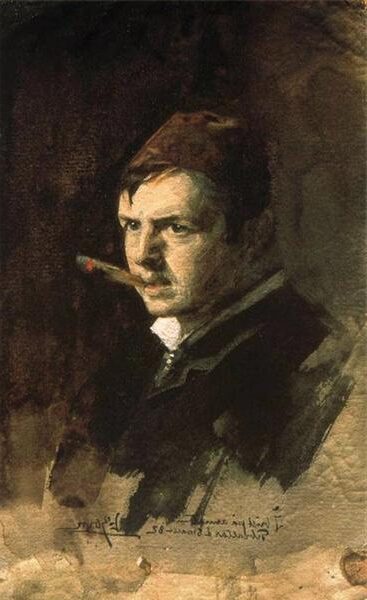
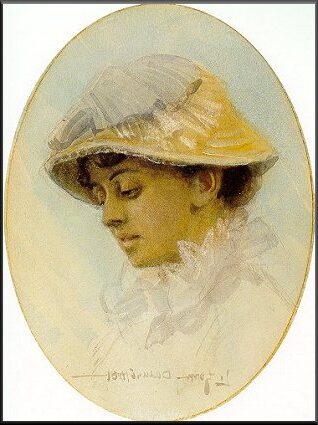
His marriage to Emma gave him access to a broader cultural and social sphere. This connection facilitated interactions with cultural elites and expanded his influence in art circles.
Emma’s partnership was more than personal; it was integral to Zorn’s professional success and societal impact, providing stability and inspiration during pivotal moments in his career.
Associations with Historical Figures
Zorn was known for his portraits of well-known historical figures. Among these were kings like Oscar II and American presidents, which cemented his reputation as a leading portrait artist. His work included depictions of prominent people like Isabella Stewart Gardner and socialites like Virginia Bacon.
These associations bolstered his influence and opened doors to prestigious commissions. Through this, Zorn’s work was seen by diverse audiences, enhancing his international standing.
His connections with such figures reflect the social and historical reach of his artworks, influencing both European and American artistic scenes.
Swedish State and Upbringing of Swedish Impressionism
As a prominent Swedish painter, Zorn contributed significantly to the Swedish state and its cultural identity. He played a critical role in the development and recognition of Swedish Impressionism.
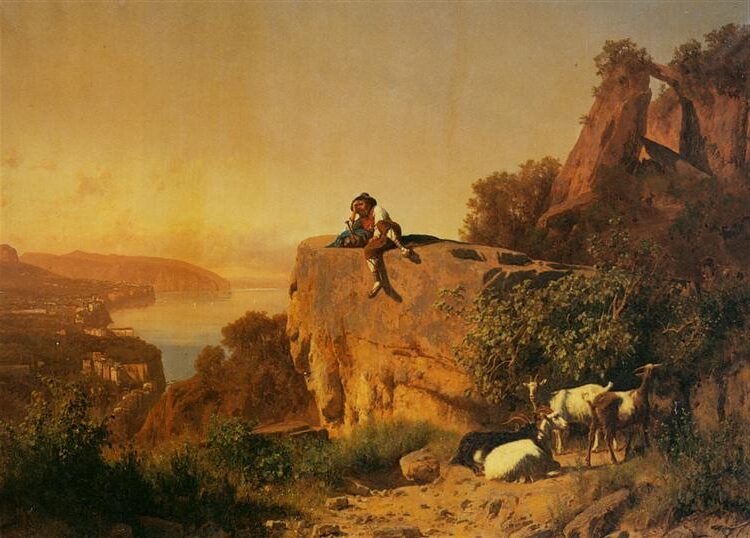
Surveying the Vista (1886) by Anders Zorn
His popularity and style brought attention to this movement, blending traditional Swedish themes with innovative techniques.
Zorn’s connection to his homeland was deepened through places like Gopsmor, where he lived and created notable works like “Our Daily Bread.”
Through these contributions, he not only elevated Swedish art but also influenced international perceptions of Swedish culture. His ability to merge local themes with global art trends helped establish a unique Swedish Impressionist identity.
Frequently Asked Questions
Anders Zorn was a master of using limited colors and distinctive brushwork. His contributions to art include a unique palette and portrayals of intimate moments.
What techniques did Anders Zorn use in his paintings?
Anders Zorn used a limited palette known as the Zorn Palette, which comprised white, yellow, red, and black. He applied loose brushwork and focused on capturing light and shadow with precision.
Can you describe Anders Zorn’s contribution to the art world?
Zorn significantly influenced portrait art by simplifying colors and showcasing natural light. His innovative use of a limited palette has inspired many artists to explore color harmony and balance.
Which museums showcase Anders Zorn’s artwork?
Works by Anders Zorn can be seen at the Nationalmuseum in Stockholm, Sweden, and other major museums worldwide. These institutions hold both his paintings and prints, offering a glimpse into his artistic journey.
What are the notable characteristics of Anders Zorn’s painting style?
Zorn’s painting style features bold brushwork, limited color use, and keen attention to light effects. His portraits often capture candid, lifelike expressions, bringing a dynamic quality to his subjects.
How do Anders Zorn’s watercolors compare to his oil paintings?
His watercolors are known for their delicate, luminous quality, while his oil paintings tend to have richer, deeper colors. Both mediums reflect his mastery in depicting light.
Where can one purchase authentic Anders Zorn prints or paintings?
You can purchase authentic Anders Zorn prints or paintings through reputable art auction houses and galleries. These places specialize in historical art. Make sure to verify authenticity through reliable sources before purchasing.

